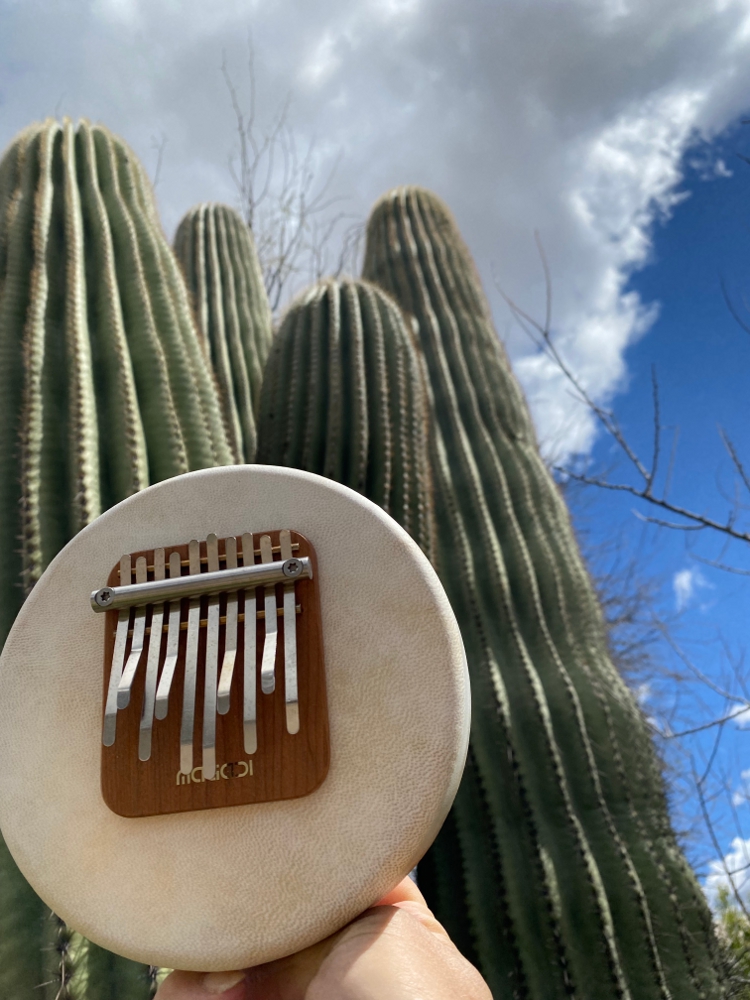
Use of this website constitutes acceptance of the Privacy Policy and User Agreement. Copyright © 2020 Kalimba Magic. All Rights Reserved.
One of the key features of most kalimbas: You will find the higher-octave note on the opposite side from where you find that same note an octave lower. For example, low C is on the right, and the C that’s an octave higher is on the left side of the kalimba. This layout (which is of alternating ascending notes) completely informs how the instrument is played and the resulting music.
But what if there were a tuning where a given note that is on the right side… stays on the right side in the upper octaves? Such a tuning would be played totally differently than the standard kalimba tunings, and it would also make quite different music.
Are you interested in making totally different music and getting a totally different kalimba experience, just for the price of a new tuning? Come with me as we explore the Duncan-tuned kalimba tuning!
The Duncan tuning is a heptatonic (6 tone) B minor scale, starting on F#. Heptatonic scales have 6 notes per octave. That would be: B, C#, D, E, F#, and A. On a kalimba with alternating note layout, a 6-note scale means the left side of the instrument will make one chord, and the right side will make another chord.
One of the main results from Hugh Tracey’s 1950s-era survey of traditional African kalimbas is that about 40% of the instruments had 5-note scales (pentatonic), 20% had 6-note scales (heptatonic), and 40% had 7-note scales (many were similar to the white notes on the piano). So, while 6-note tunings were not the most common tunings in Africa, they are firmly rooted in the historical record of traditional African scales.
I was so taken with the Duncan tuning that I wrote an ebook to help people play this remarkable instrument.
Check out the below page from our new 50-page ebook on the Duncan-tuned Alto kalimba. It drives home the main point of the Duncan tuning: that the entire right side of the kalimba is one chord, and the entire left side of the kalimba is a different chord. You can play any subset of the left side and get an A major chord. You can play any subset of the right side and get a B minor chord. Of course, these two chords go great together, like dark and light.

The video below is my take on what can be easily and simply accomplish on the Duncan-tuned Alto kalimba. See how I emphasize notes on the right side… then the left side.
If you have an Alto kalimba already, you can put it into this tuning yourself. You could also send it to the Kalimba Doctor and he’ll retune to the Duncan tuning. Or, if you want to be able to access both your standard G Alto tuning and the Duncan tuning, you will probably want to have one of each.


Sign up for our newsletter and free resources with your email address:
We pinky promise not to spam you and to only send good stuff.
 Assist Paul Tracey Rebuild His House in Pacific Palisades
Assist Paul Tracey Rebuild His House in Pacific Palisades 8-Note Spiral Kalimba Turned into a Student Karimba
8-Note Spiral Kalimba Turned into a Student Karimba Seek to Infuse Your Musical Moments With Beauty and Magic
Seek to Infuse Your Musical Moments With Beauty and MagicUse of this website constitutes acceptance of the Privacy Policy and User Agreement. Copyright © 2020 Kalimba Magic. All Rights Reserved.